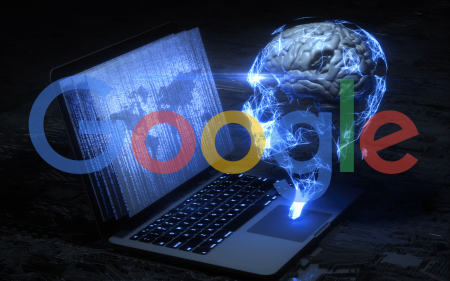Social media has allowed conspiracy theories, disinformation and antivaxxers to spread because it brings more eyeballs, and therefore more advertising.
It’s common cause that Leni Riefenstahl was a gifted filmmaker, whose movies were well shot and hugely evocative. The only problem is that those films were almost purely propaganda for the Nazi regime.
The odious content of the films was a covert propaganda messaging to sell the Third Reich’s nonsense that Aryans were superior to other races, as conveyed by the title of her most famous one, Triumph des Willens (Triumph of the Will).
Sadly, this was one of many examples of the insidious nature of propaganda that used the medium of the day for its own gruesome ends. During the Rwandan genocide in the 1990s, it was radio – were the word “cockroach” took on a sinister and deadly meaning.
We’ve seen an unfortunate evolution of the use of popular media for such nefarious purposes. In 2019 that propaganda frontier has expanded to the mass media of our day: YouTube, social media and smartphone apps.
The world is seeing a terrifying backlash against rationality and science. This is especially – and sadly – true when it comes to vaccinating children. This stems from one of the worst scientific frauds of all time. Now disbarred British doctor Andrew Wakefield falsified his research and it was published by The Lancet medical journal in 1998. The publication has retracted the fraudulent paper, claiming it was “deceived” by his “utterly false” assertion that autism was caused by the measles, mumps and rubella (MMR) vaccine. His medical qualifications were taken away and two decades of research has failed to find any link whatsoever. This has not stopped Wakefield’s false claims becoming lore for the conspiratorially-minded and him becoming a glamourised figure by the lunatic fringe.
YouTube is rife with these antivaxxers spreading irrationality and fearmongering. By vaccinating all children from these dread diseases, it protects all our society. It’s called herd immunity for a reason.
The world had seen numerous outbreaks of measles, a disease that was once eradicated, often in gullible communities which have believed by Wakefield’s lies. “Approximately 110,000 people died from measles in 2017 – mostly children under the age of five years, despite the availability of a safe and effective vaccine,” the World Health Organisation states.
But disinformation has unfortunately expended beyond that to apps, which are a powerful new form of communication.
A popular children’s developmental app is The Wonder Weeks, based on a book of the same name. It claims that children’s development follows predictable “leaps” – usually prefaced by grumpiness (as if that is a definition of anything with a small child) – and catalogues what developmental stage the child is experiencing.
But its founder, Professor Frans Plooij, was dismissed from the University of Groningen inn the Netherlands when his own PhD student’s research negated the book’s assertions and he tried to squash her findings from being published. The app is still for sale and has had over 500,000 downloads on Android alone.
Another recent case in point is the Femm app, which proports to be about female health and fertility but is funded by “funded and led by anti-abortion, anti-gay Catholic campaigners,” the Guardian newspaper revealed last month. Downloaded more than 400,000 times, the “popular women’s health and fertility app sows doubt about birth control [and] features claims from medical advisers who are not licensed to practice in the US”.
Other regular fodder are hoaxes and conspiracy theories that the moon landing was faked, that horrific US school shootings like 2012’s Sandy Hook and last year’s Parklands didn’t happen and, if can believe it in the 21st century, that the Earth is flat.
Notorious right-wing hatemonger Alex Jones – who was finally banned last year for hate speech – claimed on his noxious InfoWars channel that the shooting at Sandy Hook Elementary School was a hoax created by the gun control lobby. His supporters started harassing the heartbroken parents of these deceased children while the social networks did nothing.
It took Twitter six years of appeals by one of those parents, Leonard Pozner, to suspend the account of a regular InfoWars interview guest, Wolfgang Halbig, who claimed the massacre hadn’t happened. He badgered parents, demanded records for the tragedy and “Wolfgang does not wish to speak with you unless you exhume Noah’s body and prove to the world you lost your son,” a fellow hoaxer emailed Pozner, whose son Noah was killed, according to the New York Times.
Another example is a prominent YouTuber’s 104-minute documentary, “Conspiracy Theories With Shane Dawson,” which includes all the usual paranoid theories, including one that the Earth is flat. It “kind of makes sense” he’s previously said of this absurd pre-Copernicus bunkum. Dawson has 20-million followers on YouTube, while this video got 30-million views.
Researchers at the Flat Earthers annual conference for the last two years found that attendees asked “where is the curve?” and “why is the horizon always at eye level?”
Asheley Landrum, the lead researcher from Texas Tech University who investigated this phenomenon, said: “Their algorithms make it easy to end up going down the rabbit hole, by presenting information to people who are going to be more susceptible to it.”
YouTube’s business model requires its viewers to spend as much time watching videos and therefore adverts. The bigger problem is that YouTube’s recommendation algorithm suggests increasingly controversial content, as multiple surveys have found. This unfortunately happens to children too.
Guillaume Chaslot, who worked as a YouTube software engineer, created the AlgoTransparency.org website to show how this recommendation algorithms works. He found viral hoaxes and conspiracy theories are the top recommended videos on some 1,000 popular YouTube channels. The number one recommend video one day was “This Man Saw Something at Area 51 That Left Him Totally Speechless!”.
Almost too little too late, YouTube announced in January that it would alter its recommendations algorithm to prevent spreading “borderline content and content that could misinform users in harmful ways”. These include “videos promoting a phony miracle cure for a serious illness, claiming the earth is flat or making blatantly false claims about historic events like 9/11”.
These conspiracy theories are what researchers Danah Boyd and Michael Golebiewski call a “data void” and how the lack of data “can be exploited by those with ideological, economic, or political agendas”.
Pinterest, of all social media, managed to solve the anti-vaxxing problem while the other social media sites didn’t. All that Pinterest did differently, one might say, is ban this anti-scientific nonsense outright, while Facebook, Twitter and YouTube are too afraid to offend these rabid morons so they “downrank” or “de-emphasise” those posts but don’t remove them outright.
Since February 2019, if you searched for antivaxx info, no search results were retuned. Unlike the other social networks, it showed real resolve and was able to shut down this disinformation decisively. YouTube, Facebook and Twitter could just as easily do the same but they argue that they aren’t the arborators of whether things are real or not.
Facebook CEO Mark Zuckerberg infamous said last July that, even though he finds “people who deny that the Holocaust happened… deeply offensive,” because he doesn’t “think that they’re intentionally getting it wrong”.
What he didn’t say is that Facebook gets enormous traffic out of such drivel and, the more eyeballs, the more advertising they can be shown. It’s all about profit. Further, like the other social networks, it fears the backlash from the alt-right and conservatives in the United States who claim they are being censored. Controversial content plus controversy equals even more advertising opportunities.
National regulators have failed to pick up on these issues, but then they have failed to identify most of the problems with the consolidation of power that big tech and social media firms have wrestled for themselves. Like all social media hoaxes or disinformation, the golden rule applies: if it seems too good to be true, it isn’t. Similarly, if a story has a headline like “… left him speechless” or “you won’t believe what happened next” it’s unlikely to be true. For the discerning viewer or reader, do a quick search on fact-checking website Snopes.com.
As Apple CEO Tim Cook said at a Stanford University commencement speech this month, the tech sector has a lot to answer for: “This industry is becoming better known for a less noble innovation: the belief that you can claim credit without accepting responsibility”.
* This column originally appeared in the Financial Mail.



